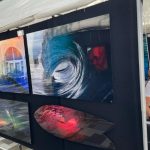Sifting through the unnecessary: How to choose your best photos
Sifting through the unnecessary: How to shoot and choose your best photos
It’s always a tedious task when you realise that your recent camping trip to the mountain range nearby or a day of photographing urban landscapes or people in the streets is choc-a-bloc full of photos that are average, poorly lit, kinda blurry or just framed wrong, among many other things. Not only is that normal but also one of the many processes that makes a better photographer: it’s practically impossible for anyone to get better at photography without taking hundreds or thousands of photos.
Even if you do get through the hurdles of improving your photography, choosing the right photo(s) is a difficult, confusing and challenging process. It doesn’t help that the Internet has a bunch of conflicting information on how to go about this. Should you consciously take less photos, so you’re not conflicted about many photos, or should you take more so that you can be sure that at least a couple of shots work out? There’s many such conundrums that ought to make you feel like pulling your hair out, but this guide will hopefully reduce that to a happy bang on the desk while you’re editing a picturesque image that you know will impress. To be sure though, this guide isn’t on how to improve your photography (that one can be found here), but it does help improve one’s process behind it.
Taking More Pictures or Less?
A conundrum for the ages, there’s a lot of contrasting viewpoints on how one should go about choosing their best photos. It’s polarising because the outcomes can (and often do) vary wildly, as choosing to take more or less photos changes your approach to photography drastically. The best of both worlds isn’t necessarily the best option either, because that would presumably be just the normal amount of photos that one would take and does nothing to alleviate the issue at hand.
The best course of action would be to determine your own level of expertise when it comes to photography and to correlate it with your personal process as a photographer and the type of photography you’re involved in. For example, if you spend hours trying to take photos of the wildlife, it’s perhaps not feasible to take hundreds of photos of the animal you’re trying to capture (mostly because that animal will range from being out on your porch to a once in a blue moon, million dollar photo). So in this case, taking more photos might help, but it really wouldn’t make much sense.
Film cameras have limited number of shots, & film photographers can attest to it bolstering skill & focus when taking photos, but this doesn’t work for every niche
Expanding on this, taking more photos is definitely something that’s more easily afforded with the universal nature of digital and memory slots. People who have shot on film will attest to the precarious need to take less photos, and how the lack of excess when it comes to shots available forced them to learn and focus on taking better photos. This works wonderfully for portrait, landscape and product photography. However, in niches like street, wildlife or photography in concerts, this is difficult to execute.
Therefore, the best course of action is to try and stick to taking lesser photos, unless your situation calls for more photos.
Have a look at your photos in a different perspective
This point seems rather vague and reads like it’s easier said than done, but take some of the following points into consideration before dismissing it entirely. More often than not, we’re used to looking at photos head on, looking at framing, lighting, focus, the colour schemes and occasionally the patterns one might find, but that’s about it. And while these are integral to making or breaking a photo, there’s more to taking (and choosing) good photos than just this.
For example, symmetry and geometrical patterns in photos are pleasing to the eye and add a bit of a wow factor. Yes, the rest of the photo also needs to be compelling, of course, but when executed well, it makes for a good photo.
Some photographers have experimented with looking at their photos upside down to understand and recognise these patterns, which can be easy to miss. I’ve personally utilised this technique as well, especially when confused between photos of a similar subject/place but utilising different types of lighting or framing. Another crucial bit that’s overlooked is to just give it time. I can’t remember the number of times I’ve browsed past the same photos in a folder and found one that looks unique, without having paid much attention to it until that moment.
Find a Consistent Style and chuck the Illusion of Dynamicity
It’s very easy to fall into the allure of having a dramatically diverse set of photographic styles to best display your photographic skill, or your penchant for experimentation. While there’s nothing inherently wrong with this approach, it’s also incredibly difficult to pull it off correctly. The process of finding a style you truly identify with is one of experimentation in itself, along with trial and error and a lot of practicing,
While this may sound like advocacy for repetition and monotony, the point is to find a style and method of capturing moments in a way that you truly enjoy, reflects you and who you are and can be replicated by you and is distinguishably you in more than one way. A collection of photos won’t be dynamic or enigmatic simply because of variety for the sake of it. It’s also not an approach that will not lead to good results. Why? Because the photos you take need to reflect you, your style, your heart and soul and Personality and not just a collection of photos off of a camera roll.
While having variety and dynamicity in your photos can be great, finding a consistent style & method can help you bridge the gap in having more great photos among total photos taken
Personally, there’s probably three main things you should really look for while taking a photo: good technique, to convey a story/evoke strong feelings and creating intrigue. There’s many subsequent things one can do to discern which photos work and which don’t. While this may resonate and work for a lot of people, know that there isn’t a one size fits all when it comes to finding a style or taking good photos, However, once you find that style, sifting through the unnecessary will become less and less frequent.
Composition is King
Doesn’t matter how beautiful the photo is if there’s tiny things about it that just don’t add up. This could be anything: a slanted frame, overexposure, out of focus subjects, but these are some of the more obvious ones. A lapse that I think most photographers are guilty of is to not account for distractions in the frame. If you’re taking a photo in the street of a person sitting on the shore, but there’s a giant lamp post next to them, it’s going to take away from the intended emotion you’re trying to evoke.
Framing, no tilts, good lighting are important, but so is the intent and the emotion it evokes; this photo wouldn’t hit the same without the painter
Or, if you’re taking an over the shoulder shot of a quaint looking cycle in front of a small building, it’s probably going to be a very different photo if the person is looking away. Or in a completely different vein, if you’ve kept your shutter speed real quick and try to capture a moving vehicle and its tail lights, it’s not going to have the desired effect you’re looking for. Intent is crucial here, but to be able to distinguish between what you know will look great in that split second when you have to take the photo is something that takes a while to get right consistently. This feeling, of getting it right more often than not, is a feeling that most photographers end up chasing because of how satisfying it feels. There’s nothing like knowing you’ve gotten a fantastic shot right after you take it!
Consult with fellow photographers
When you’re feeling the indecisiveness and doubt creep in, it’s a good idea to then ask your fellow photographers for some input. While asking a wildlife photographer for input on a product photo is probably not going to end up as well as you’re expecting, the idea is to get in some constructive criticism or some form of help. There’s plenty of online forums for this as well, and social media isn’t the worst place either. Websites like Reddit (subreddits like r/askphotography and r/postprocessing can help) and Twitter can be great for getting in some advice and understanding where you’ve probably gone wrong in a photo, what you can do better and why x or y photo might be a better pick. Getting more eyeballs and input always helps!






